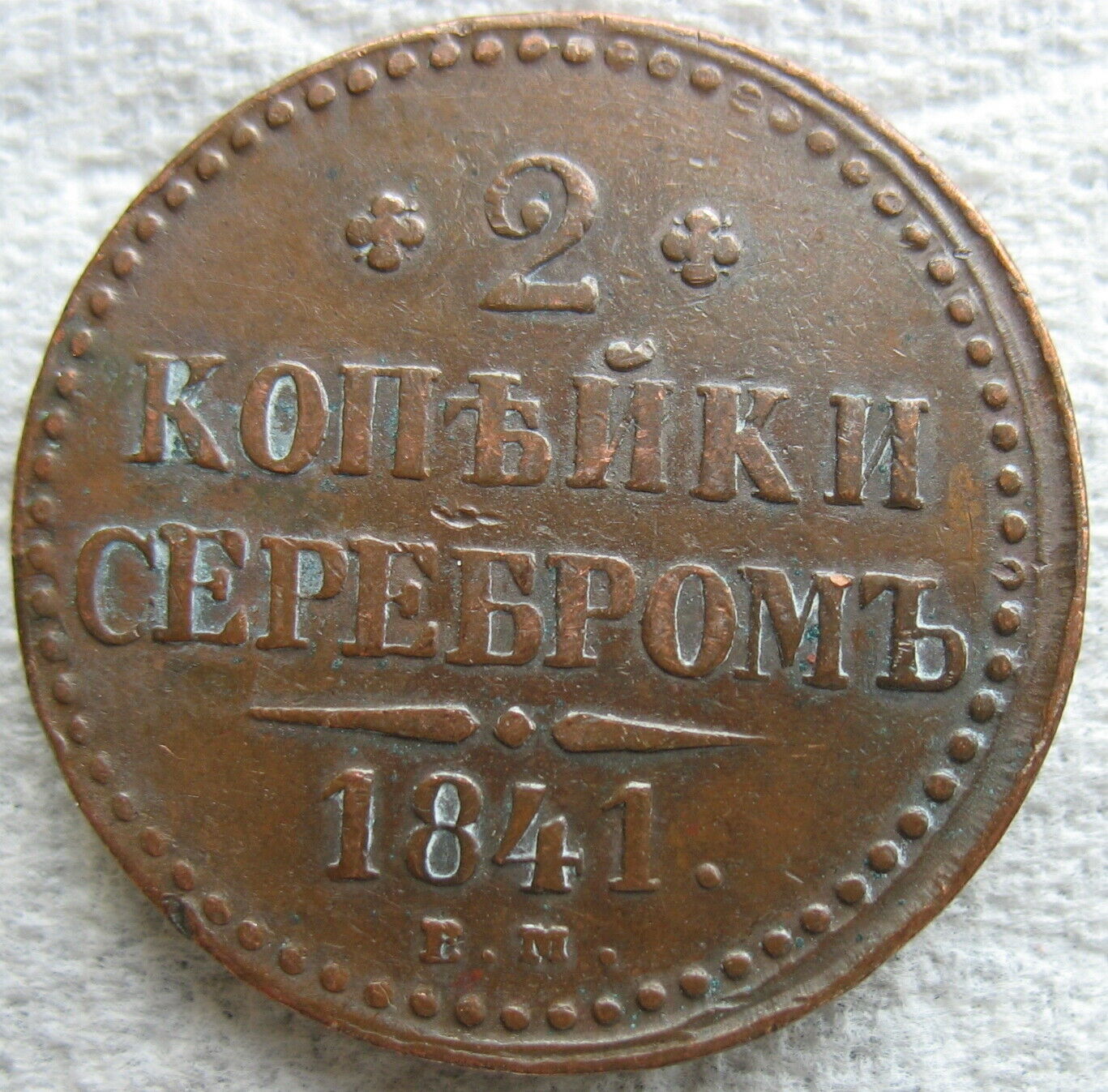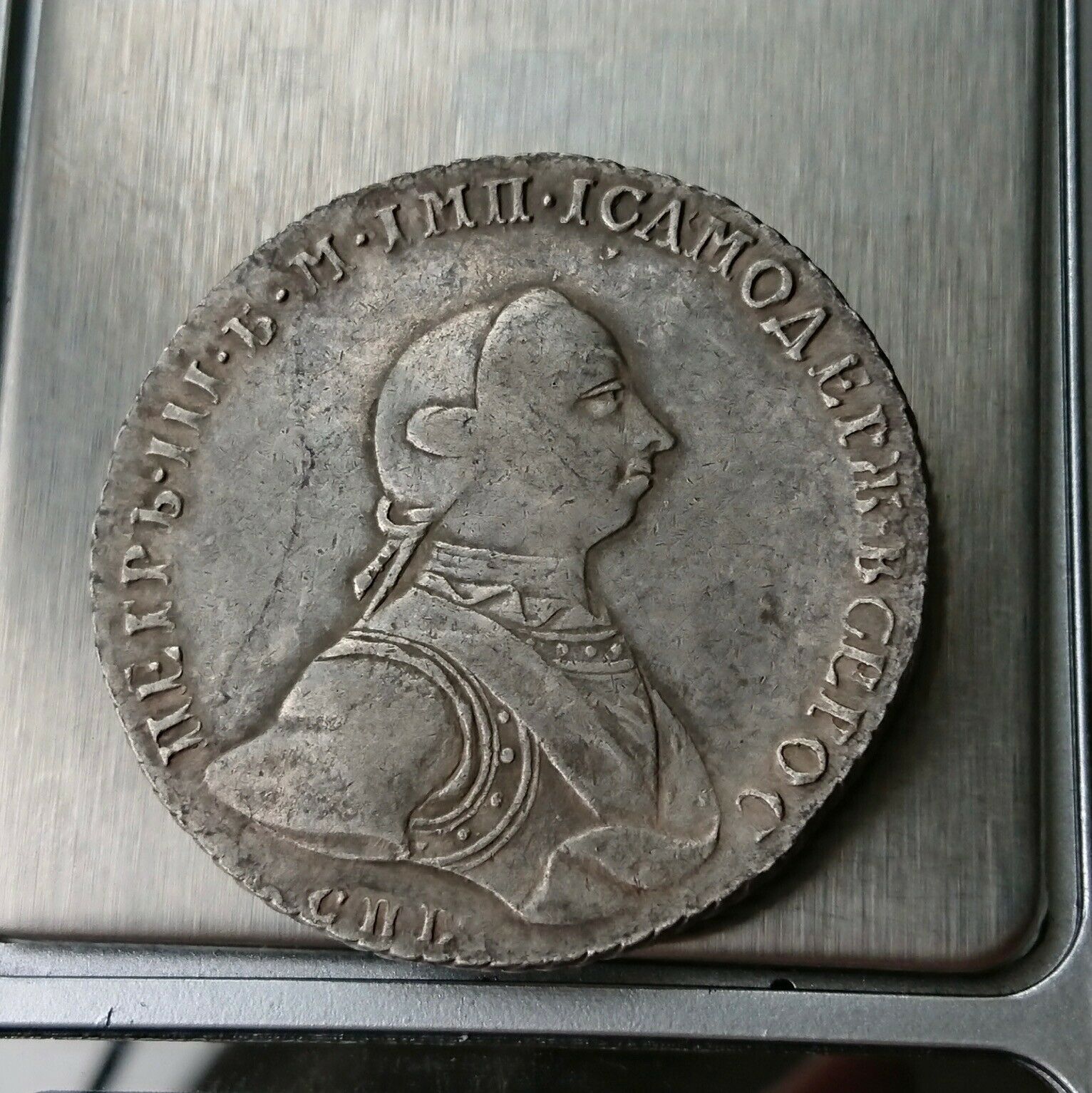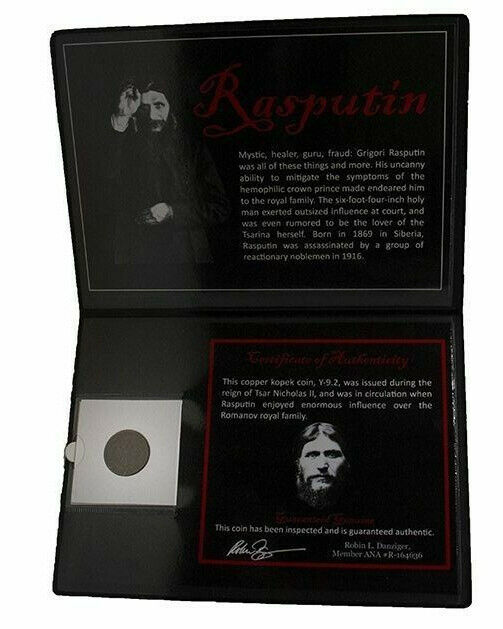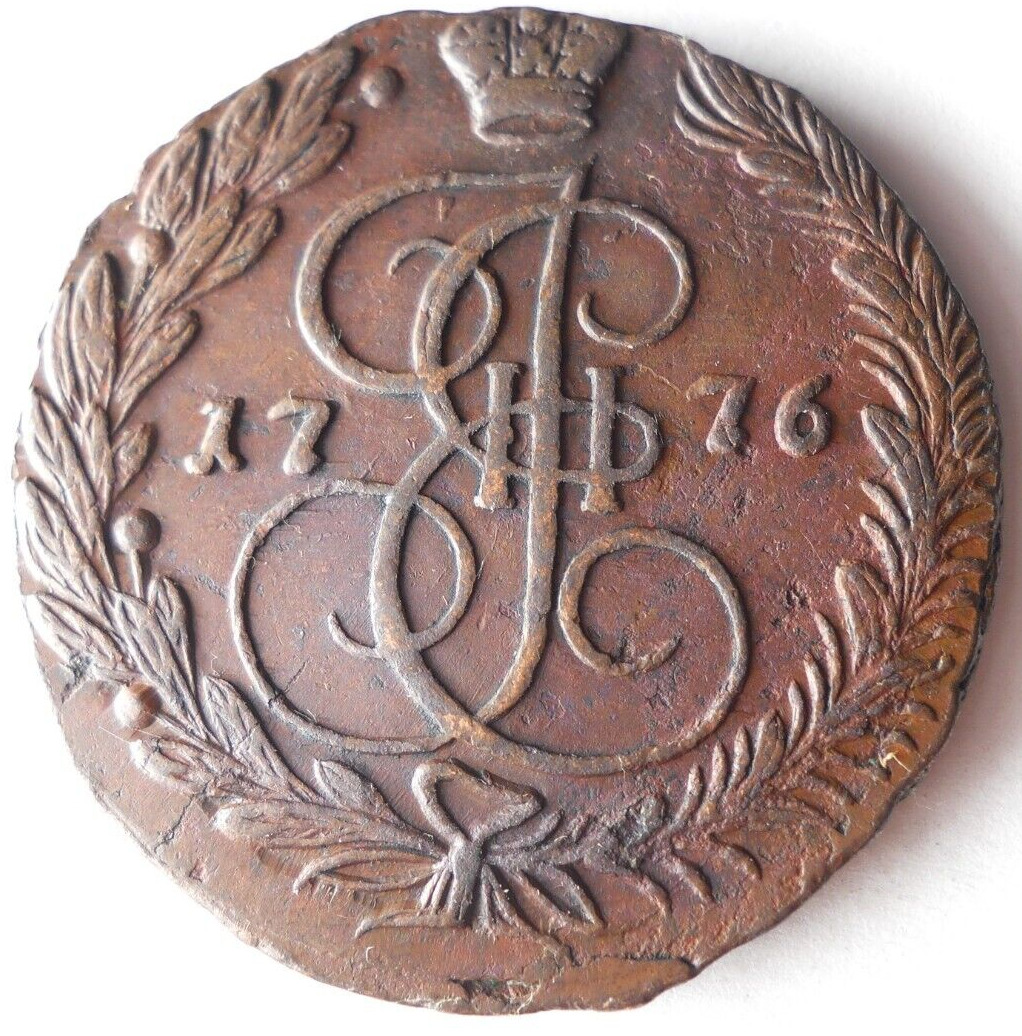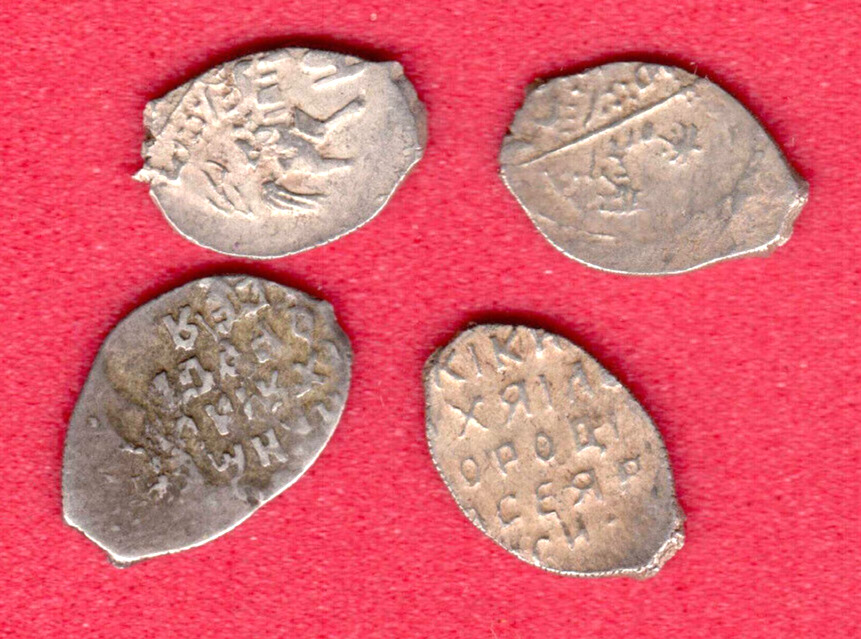-40%
1584/1613, Russia, Ivan IV/Mikhail Fedorovich. Silver Denga & Kopek Coins. 2pcs!
$ 0.52
- Description
- Size Guide
Description
CoinWorldTV1584/1613, Russia, Ivan IV/Mikhail Fedorovich. Silver Denga & Kopek Coins. 2pcs!
Condition:
VF+ / XF!
Denomination: Denga / Kopek
Mint Place: Pskov? / Moscow (oM)
Mint Period: 1547-1584 / 1613-1645
Ruler (Tsar): Ivan IV "the Terrible" / Mikhail Fedorovich.
Diameter: 15mm / 13mm
Weight: 0.66gm / 0,46gm
Material: Silver
Obverse:
The Tsar as St. George on horse, killing dragon with spear in his right hand. / Saint George on horse holding spear right. Mint initials of the Moscow mint (o above M) below.
Reverse:
Inscription ("
Czar and Grand Prince Ivan of Entire Rus
") in five lines. / Inscription in five lines.
Authenticity unconditionally guaranteed.
Bid with Confidence!
Ivan IV Vasilyevich
,
Ivan Chetvyorty, Vasilyevich
), known in English as
Ivan the Terrible
(
Ivan Grozny
) (25 August 1530, Moscow - 28 March [O.S. 18 March] 1584, Moscow) was Grand Prince of Moscow from 1533. His long reign saw the conquest of the Khanates of Kazan, Astrakhan, and Siberia, transforming Russia into a multiethnic and multiconfessional state spanning almost 1 billion acres, growing during his term at a rate of approximately 130 square kilometers a day. Ivan oversaw numerous changes in the transition from a medieval nation state to an empire and emerging regional power, and became the first Tsar of a new and more powerful nation.
Historic sources present disparate accounts of Ivan's complex personality: he was described as intelligent and devout, yet given to rages and prone to episodic outbreaks of mental illness. One notable outburst may have resulted in the death of his groomed and chosen heir Ivan Ivanovich, which led to the passing of the Tsardom to the younger son: the weak and possibly mentally retarded Feodor I of Russia. His contemporaries called him "Ivan
Grozny
" the name, which, although usually translated as "Terrible", is actually associated with might, power and strictness, rather than horror or cruelty.
Mikhail I Fyodorovich
Mikhail Fedorovich
(12 July 1596 -" 12 July 1645) was the first Russian Tsar of the house of Romanov. He was the son of Feodor Nikitich Romanov (later known as Patriarch Filaret) and Xenia (later known as "the
great nun
" Martha). His reign marked the end of the Time of Troubles.
Michael was unanimously elected Tsar of Russia by a national assembly on 21 February 1613, but the delegates of the council did not discover the young Tsar and his mother at the Ipatiev Monastery near Kostroma until 24 March. Initially, Martha protested, believing and stating that her son was too young and tender for so difficult an office, and in such a troublesome time. The weeping boyars solemnly declared that if he persisted in his refusal, they would hold him responsible to God for the destruction of Russia[
citation needed
]. Michael eventually consented to accept the throne.
Michael's election and accession to the throne form the basis of the Ivan Susanin legend, which Russian composer Mikhail Glinka dramatized in his opera
A Life for the Tsar
.
In so dilapidated a condition was the capital at this time that Michael had to wait for several weeks at the Troitsa monastery, 75 miles (121 km) off, before decent accommodation could be provided for him at Moscow. He was crowned on 22 July 1613. The first task of the new tsar was to clear the land of the countries occupying it. Sweden and Poland were then dealt with respectively by the peace of Stolbovo (17 February 1617) and the Truce of Deulino (1 December 1618). The most important result of the Truce of Deulino was the return from exile of the tsar's father, who henceforth took over the government till his death in October 1633, Michael occupying quite a subordinate position.
Tsar Michael suffered from a progressing leg injury (a consequence of a horse accident early in his life), which resulted in his not being able to walk towards the end of his life. He was a gentle and pious prince who gave little trouble to anyone and effaced himself behind his counsellors. Sometimes they were relatively honest and capable men like his father; sometimes they were corrupted and bigoted, like the Saltykov relatives of his mother. He was married twice, first to Princess Maria Vladimirovna Dolgorukova in 1624, who died four months after the marriage the next year, and then in 1626 to Eudoxia Streshneva (1608-"1645), who brought him 10 children. Michael's failure to wed his daughter Irene of Russia with Count Valdemar Christian of Schleswig-Holstein, a morganatic son of King Christian IV of Denmark, in consequence of the refusal of the latter to accept Orthodoxy, so deeply afflicted him as to contribute to bringing about his death on 12 July 1645.
The two most important politically government offices (prikazes) were Posolsky Prikaz ("Foreign Office") and Razryadny Prikaz (a Duma chancellery and a personnel department for both central and provincial administration including military command). Those offices could be pivotal in struggles between Boyar factions, so they were traditionally headed not by Boyars but by dyak (professional clerks).
The first head of the Posolsky Prikaz under Michael was Pyotr Tretyakov until his death in 1618; he conducted policy of allying with Sweden against Poland. The next one, Ivan Gramotin had a reputation of a Poloniphile; this appointment was necessary to bring forth Filaret's release from captivity. In mid-20s Filaret began preparations for war with Poland; Gramotin fell in his disfavour and was fired and exiled in 1626. The same fate was shared by Efim Telepnev in 1630 and Fedor Likhachov in 1631 - they too tried to soothe Filaret's belligerent approach. Ivan Gryazev, appointed in 1632, was promoted from second ranks of bureaucracy to fulfill Filaret's orders. After Filaret's and Gryazev's deaths the post was once again assumed by Gramotin in 1634, and after the latter's retirement in 1635, by Likhachov, with general course on pacification.
Razryadny Prikaz was first headed by Sydavny Vasilyev; Filaret replaced him by his fellow in captivity Tomilo Lugovskoy, but the latter somehow caused Filaret's anger and was exiled. In 1623 Fedor Likhachov was made head of Prikaz till his shift to Posolsky Prikaz, and in 1630 Razryad was given to Ivan Gavrenev, an outstanding administrator who took up this post for 30 years.
Three other strategic offices were Streletsky Prikaz (in charge of streltsy regiments who served as Moscow garrison), Treasury (Prikaz bolshoy kazny), and Aptekarsky Prikaz ("Pharmacy office", in fact ministry of health, most particularly the tsar's health). After Filaret's arrival their former heads were sent away from Moscow, and all three given to Ivan Cherkassky (Filaret's nephew), who proved to be an able and competent administrator and was a de facto prime minister till his death in 1642. Fedor Sheremetev who had succeeded to all Cherkassky's posts was a rather weak figure; the real power was in the hands of a court marshal, Alexey Lvov.
Only 1$ shipping on each additional combined item!




